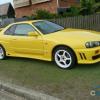T28 rear housing size & Hi flowed ?
Announcements
-
Similar Content
-
Latest Posts
-
Hi, SteveL Thank you very much for your reply, you seem to be the only person on the net who has come up with a definitive answer for which I am grateful. The "Leak" was more by way of wet bubbles when the pedal was depressed hard by a buddy while trying to gey a decent pedal when bleeding the system having fitted the rebuilt BM50 back in the car, which now makes perfect sense. A bit of a shame having just rebuilt my BM50, I did not touch the proportioning valve side of things, the BM50 was leaking from the primary piston seal and fluid was running down the the Brake booster hence the need to rebuild, I had never noticed any fluid leaking from that hole previously it only started when I refitted it to the car. The brake lines in the photo are "Kunifer" which is a Copper/Nickel alloy brake pipe, but are only the ones I use to bench bleed Master cylinders, they are perfectly legal to use on vehicles here in the UK, however the lines on the car are PVF coated steel. Thanks again for clearing this up for me, a purchase of a new BMC appears to be on the cards, I have been looking at various options in case my BM50 was not repairable and have looked at the HFM BM57 which I understand is manufactured in Australia.
-
Well the install is officially done. Filled with fluid and bled it today, but didn't get a chance to take it on a test drive. I'll throw some final pics of the lines and whatnot but you can definitely install a DMAX rack in an R33 with pretty minor mods. I think the only other thing I had to do that isn't documented here is grind a bit of the larger banjo fitting to get it to clear since the banjos are grouped much tighter on the DMAX rack. Also the dust boots from a R33 do not fit either fyi, so if you end up doing this install for whatever reason you'll need to grab those too. One caveat with buying the S15 dust boots however is that the clamps are too small to fit on the R33 inner tie rod since they're much thicker so keep the old clamps around. The boots also twist a bit when adjusting toe but it's not a big deal. No issues or leaks so far, steering feels good and it looks like there's a bit more lock now than I had before. Getting an alignment on Saturday so I'll see how it feels then but seems like it'll be good to go
-
I don't get in here much anymore but I can help you with this. The hole is a vent (air relief) for the brake proportioning valve, which is built into the master cylinder. The bad news is that if brake fluid is leaking from that hole then it's getting past the proportioning valve seals. The really bad news is that no spare parts are available for the proportioning valve either from Nissan or after market. It's a bit of a PITA getting the proportioning valve out of the master cylinder body anyway but, fortunately, leaks from that area are rare in my experience. BTW, if those are copper (as such) brake lines you should get rid of them. Bundy (steel) tube is a far better choice (and legal in Australia - if that's where you are).
-






Recommended Posts
Create an account or sign in to comment
You need to be a member in order to leave a comment
Create an account
Sign up for a new account in our community. It's easy!
Register a new accountSign in
Already have an account? Sign in here.
Sign In Now